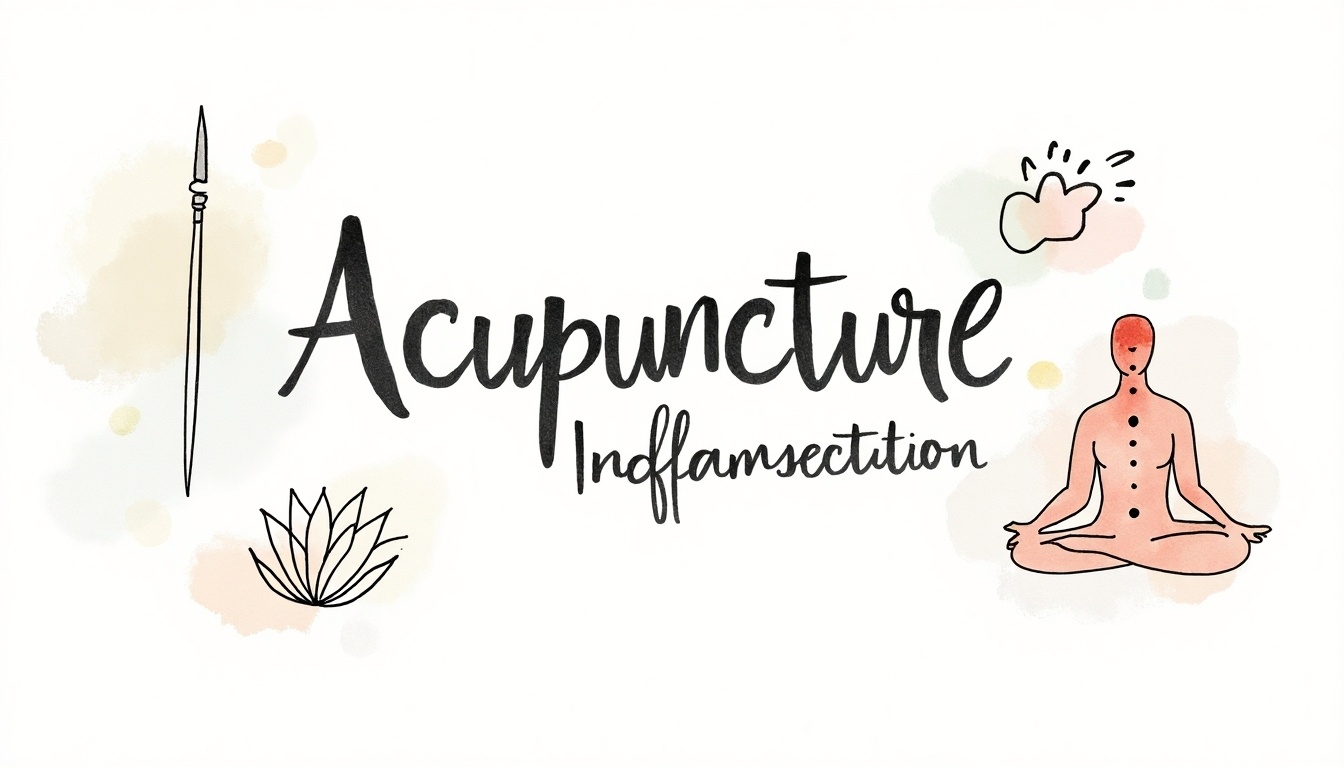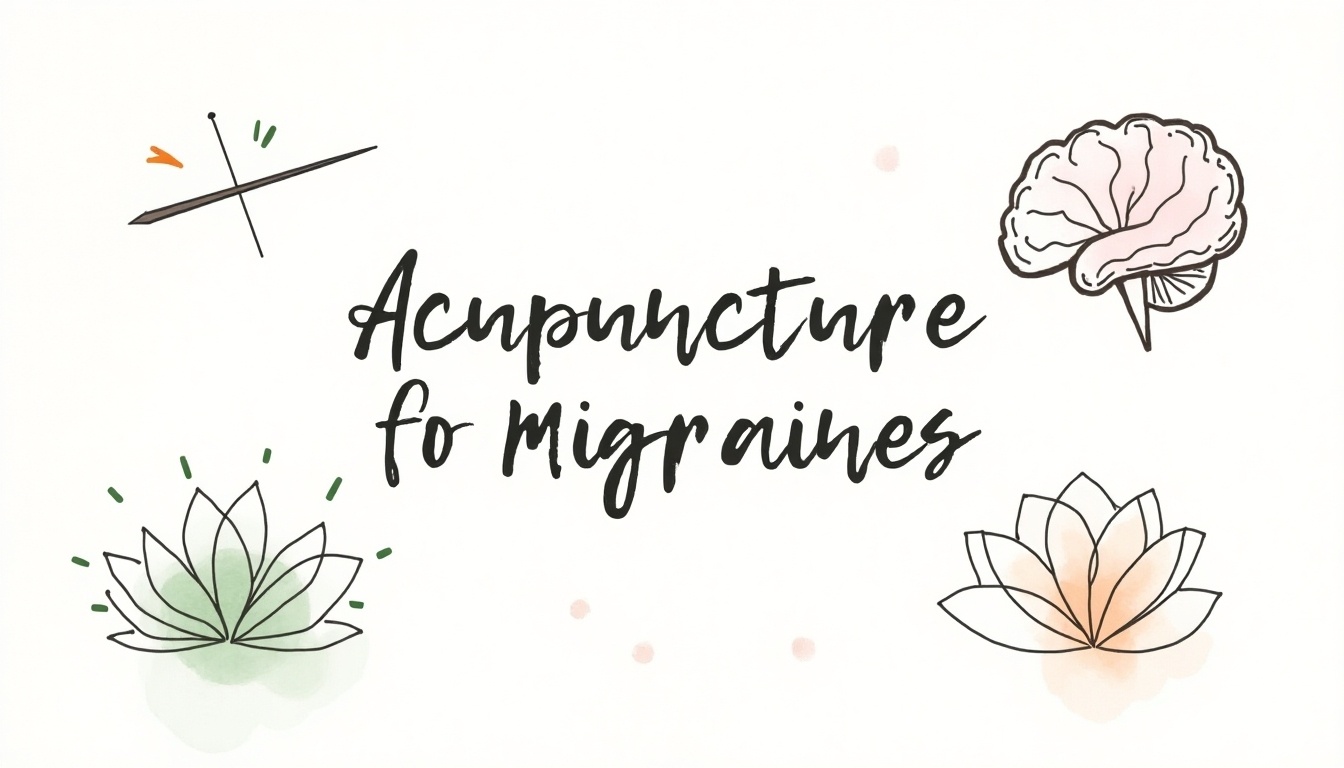Combining Acupuncture and Home Acupressure for Inflammation Management in 2025
Acupuncture and acupressure are both rooted in Traditional Chinese Medicine (TCM) and serve as complementary techniques for managing inflammation. Acupuncture uses needles to stimulate energy flow, while acupressure applies manual pressure to the same points, making it more accessible at home.
Both methods help boost circulation, reduce inflammation, and provide pain relief by influencing the nervous system and stimulating immune responses. Recent studies highlight their effectiveness in treating chronic pain conditions like arthritis.
As of 2025, combining these practices could gain popularity as more people seek holistic health solutions. Continued research will be essential for creating standardized self-treatment protocols to enhance patient care.
Understanding Acupuncture & Acupressure
Acupuncture and acupressure are both rooted in Traditional Chinese Medicine (TCM) and focus on the concept of Qi, or vital energy, which flows through the body.
Acupuncture involves the insertion of fine needles into specific points on the body to help stimulate the flow of Qi, while acupressure uses manual pressure on these same points, making it more accessible for personal use at home.
The underlying mechanisms of both practices are believed to promote better circulation, alleviate inflammation, and provide pain relief.
Acupuncture may influence the nervous system, triggering the release of endorphins and enhancing the immune response.
On the other hand, acupressure can aid in lymphatic drainage and bring about a state of relaxation, which plays a role in reducing inflammation.
Current research trends show that acupuncture can be particularly effective for managing chronic pain conditions, such as arthritis, where inflammation is a key concern.
There is a growing interest in exploring the combined effects of acupuncture and acupressure, with recent clinical trials suggesting that using both methods in tandem could lead to improved outcomes for pain management compared to employing either technique alone.
For those looking to manage inflammation at home, acupressure offers easy-to-learn techniques that can be incorporated into daily routines.
Key acupressure points that target inflammation include LI4 (Hegu), PC6 (Neiguan), and ST36 (Zusanli).
These self-care practices not only empower individuals but also serve as complementary treatments to professional therapies.
How Acupuncture & Acupressure Work

Acupuncture and acupressure are both rooted in Traditional Chinese Medicine (TCM) and share the same foundational principles.
Acupuncture involves inserting fine needles into specific points on the body to stimulate the flow of energy, known as Qi.
This practice is thought to enhance circulation and promote the body’s natural healing processes.
Acupressure uses manual pressure on these same points, making it a more accessible option for self-treatment at home.
The mechanisms by which these techniques operate include improving blood flow, reducing inflammation, and providing pain relief.
Acupuncture can modulate the nervous system, release natural painkillers called endorphins, and stimulate the immune response, all of which contribute to its effectiveness in managing conditions associated with inflammation.
Acupressure, while non-invasive, also promotes relaxation and can enhance lymphatic drainage, further aiding in the reduction of swelling and discomfort.
Current research trends highlight the effectiveness of acupuncture in treating chronic pain, such as that seen in arthritis, which is often accompanied by inflammation.
Recent studies are exploring the combined effects of acupuncture and acupressure, suggesting that utilizing both methods together may lead to improved pain management results compared to using either alone.
This synergy could provide a more comprehensive approach to inflammation management.
- Involves stimulation of specific points on the body.
- Uses needles (acupuncture) or finger pressure (acupressure).
- Aims to balance energy (Qi) flow in the body.
- Can trigger the release of endorphins and other natural painkillers.
- May reduce inflammation through improved circulation.
- Enhances relaxation and reduces stress levels.
- Supports the body’s natural healing processes.
Latest Research on Acupuncture & Inflammation
Recent studies highlight the effectiveness of acupuncture in managing inflammation-related conditions, particularly chronic pain disorders like arthritis.
Research has shown that acupuncture can lead to significant reductions in pain and inflammation, likely due to its ability to stimulate the body’s natural healing processes.
For instance, a clinical trial demonstrated that patients receiving acupuncture reported lower pain levels and improved mobility compared to those receiving conventional treatments alone.
Moreover, there is a growing body of evidence suggesting that combining acupuncture with home acupressure can enhance these effects.
By utilizing acupressure techniques, individuals can continue to stimulate key acupoints even outside of clinical settings, facilitating ongoing pain relief and inflammation reduction.
Points such as LI4 (Hegu) and ST36 (Zusanli) are particularly noted for their anti-inflammatory properties.
In addition, research has started to explore the potential of these combined practices to create a more comprehensive approach to inflammation management.
Future studies are likely to focus on establishing specific protocols for their combined use, ultimately aiming to provide standardized guidelines that empower patients in their self-care routines.
Effective Home Acupressure Techniques
Home acupressure techniques can be simple yet effective ways to manage inflammation.
One key point is LI4, also known as Hegu, located between the thumb and index finger.
Applying firm pressure here for about 5 minutes can help alleviate pain and reduce inflammation in various parts of the body.
Another important point is PC6, or Neiguan, which is found on the inner forearm, about two finger widths from the wrist crease.
Pressing this point can promote relaxation and improve circulation, which may further aid in reducing inflammation.
Lastly, ST36, known as Zusanli, is located just below the kneecap and can boost overall energy and immune function when stimulated.
These techniques not only empower individuals to take control of their health but also complement professional treatments, making it easier to integrate into daily routines.
| Technique | Description | Benefits | Key Points |
|---|---|---|---|
| LI4 (Hegu) | Pressure on the hand between the thumb and index finger | Reduces pain and inflammation; boosts immune response | Commonly used for headaches and general pain relief |
| PC6 (Neiguan) | Pressure on the inner forearm, about two inches down from the wrist | Alleviates nausea and anxiety; promotes relaxation | Useful for stress-related inflammation |
| ST36 (Zusanli) | Pressure on the lower leg, about four fingerbreadths below the kneecap | Enhances digestion; strengthens the immune system | Considered one of the most important points for overall health |
Future Trends in Inflammation Management
As we look toward 2025, the integration of acupuncture and home acupressure is poised to gain traction in the realm of inflammation management.
The growing awareness of holistic health approaches means more individuals may seek natural, non-invasive methods to address chronic inflammation.
With a rise in research exploring the combined benefits of these two techniques, future studies could focus on creating standardized self-treatment protocols.
For instance, mobile applications may emerge, providing step-by-step guidance on acupressure techniques, making it easier for patients to apply these methods effectively at home.
Additionally, the healthcare community may begin to emphasize the importance of patient education, ensuring individuals understand how to incorporate these practices into their daily routines.
As we embrace a more integrative health model, the collaboration between acupuncture practitioners and acupressure advocates could foster a comprehensive approach to managing inflammation that empowers patients and enhances their quality of life.
Combining Approaches for Better Health
Combining acupuncture and home acupressure creates a powerful strategy for managing inflammation.
Both techniques share the same foundational principles from Traditional Chinese Medicine, making their integration seamless.
Acupuncture targets specific points with needles, promoting energy flow and aiding in pain relief meanwhile, acupressure allows individuals to apply pressure to these same points without needles, making it a convenient option for self-care at home.
Research suggests that using both methods together can enhance their individual effects.
For example, acupuncture may tackle deeper issues like chronic pain by modulating the nervous system and stimulating the immune response.
At the same time, acupressure can support this by improving lymphatic drainage and promoting relaxation, which is crucial for reducing inflammation.
This combination not only empowers patients to take charge of their health but also complements professional treatments, offering a holistic approach to managing inflammation.
As we move towards 2025, the potential for these integrated practices to become mainstream in health care settings is promising.
Future studies may focus on how to standardize self-treatment protocols and develop user-friendly mobile applications to guide individuals in their acupressure practices, making it easier than ever to incorporate these techniques into daily routines.
Frequently Asked Questions
1. How does acupuncture help reduce inflammation?
Acupuncture helps reduce inflammation by stimulating specific points on the body, which can improve blood flow and promote the release of natural anti-inflammatory substances.
2. What is home acupressure and how can it be used for pain relief?
Home acupressure involves applying pressure to specific points on the body using your fingers. It can relieve pain and inflammation by encouraging relaxation and improving circulation.
3. Can I combine acupuncture and acupressure for better results?
Yes, combining acupuncture and acupressure can enhance inflammation management by benefiting from both the direct stimulation of needles and the accessibility of pressure points at home.
4. Are there any specific acupressure points for inflammation I should know about?
Yes, some key acupressure points for inflammation include Large Intestine 4 (LI4), Spleen 6 (SP6), and Stomach 36 (ST36). These are commonly used to help reduce inflammation and pain.
5. Is it safe to use acupressure at home alongside professional acupuncture?
Yes, it is generally safe to use acupressure at home while receiving professional acupuncture, but it’s a good idea to discuss your plans with your acupuncturist to ensure a coordinated approach.
Takeaway (TL;DR)
Acupuncture and home acupressure, rooted in Traditional Chinese Medicine, are promising techniques for managing inflammation.
Acupuncture uses needles to stimulate energy flow, while acupressure applies pressure to similar points, making it accessible for home use.
Both methods enhance circulation and pain relief. Research suggests that combining both can improve outcomes for chronic pain conditions, such as arthritis.
Simple home acupressure techniques empower patients to manage inflammation effectively.
As holistic approaches gain traction, future studies may focus on self-treatment protocols and user-friendly applications.
 English
English  Spanish
Spanish  Portuguese
Portuguese 



